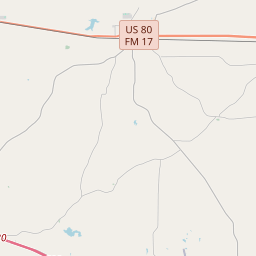Mineola Masonic Lodge No. 502, A.F. & A.M.
Historical marker location:






On February 8, 1878, the 17 members of this lodge were set to work under dispensation of the Grand Master of Texas. Mineola Lodge was chartered at the annual communication in Houston on December 15, 1879, with a membership of 48. J. R. Rutherford served as the first worshipful master. The early Masons included prominent business and professional men and civic leaders. One member was the well-known lawman William Jesse McDonald (1852-1918), a merchant who became deputy city marshall, Wood County sheriff, and finally a Texas Ranger. Another was J. H. Newsom, a city alderman and county commissioner. Newsom owned the lodge's first meeting place at Broad and Line streets. That building burned on August 10, 1880, destroying the original lodge records.
Other groups associated with the lodge include the Mineola Council of Royal Arch Masons, chartered in March 1910. An Eastern Star chapter was active even before its official charter date of 1923.
Mineola Masonic Lodge occupied several meeting places before moving to the present location. Two other Masonic lodges have consolidated with Mineola: Golden in 1938 and Albia in 1944. (1979)
As one of the most visible programs of the Texas Historical Commission (THC), historical markers commemorate diverse topics in Texas history, including: the history and architecture of houses, commercial and public buildings, religious congregations, and military sites; events that changed the course of local and state history; and individuals who have made lasting contributions to the state, community organizations, and businesses.
Texas was once a part of Mexico but gained independence in 1836 after a famous battle at the Alamo.
In the early 1800s, the region attracted settlers from the United States who were drawn to the lush forests and abundant resources. The first permanent European-American settlement was established in 1846, and it was named Quitman after John A. Quitman, a prominent politician of that time.
During the Civil War, Wood County played a significant role in supporting the Confederacy. Many residents enlisted in the Confederate Army, and the area became a center for military recruitment and training. After the war, the county suffered economically, but with the introduction of the railroad in the late 19th century, the economy began to recover.
Wood County's economy primarily relied on agriculture, with the growth of cotton, corn, and timber industries. The establishment of sawmills and the development of the timber industry brought prosperity to the area. In the early 20th century, the discovery of oil and gas reserves further fueled the county's economic development.
Today, Wood County continues to be an important agricultural and industrial center in Texas. The county's history is evident in its charming small towns, historic sites, and natural beauty. The strong sense of community and appreciation for the region's heritage are still evident today, making Wood County a vibrant and inviting place to visit or live.
Wood County Timeline
This timeline provides a glimpse into the major events and milestones that have shaped the history of Wood County, Texas.
- 1850: Wood County is established by the Texas legislature.
- 1852: The first courthouse in Wood County is built in Quitman.
- 1860: The population of Wood County reaches 4,867.
- 1875: The railroad reaches Wood County, boosting economic growth.
- 1895: The county seat is moved from Quitman to Mineola.
- 1920: The population of Wood County peaks at 19,109.
- 1930: The Great Depression hits Wood County, causing economic hardship.
- 1958: Lake Holbrook is completed, providing a recreational area for residents.
- 1970: Wood County's population decreases to 12,230.
- 1983: Holly Lake Ranch, a gated residential community, is established in Wood County.
- 2000: The population of Wood County surpasses 37,000.
- 2019: Wood County experiences steady growth and continues to be a thriving community.